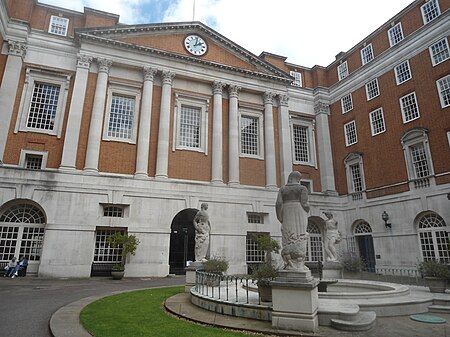British Medical Association War Memorial
Buildings and structures completed in 1954Grade II* listed buildings in the London Borough of CamdenGrade II* listed monuments and memorialsMonuments and memorials in LondonWorld War II memorials in England

The British Medical Association War Memorial, officially the War Memorial at British Medical Association House, Tavistock Square, Bloomsbury, London, commemorates men and women of the medical professions from the British Empire and Commonwealth who died in the Second World War. The memorial was commissioned by the British Medical Association and designed by the sculptor James Woodford. Unveiled in 1954 by Sir John McNee, then President of the BMA, and dedicated by Geoffrey Fisher, the Archbishop of Canterbury, it became a Grade II* listed structure in 1998.
Excerpt from the Wikipedia article British Medical Association War Memorial (License: CC BY-SA 3.0, Authors, Images).British Medical Association War Memorial
Burton Street, London St Pancras (London Borough of Camden)
Geographical coordinates (GPS) Address Nearby Places Show on map
Geographical coordinates (GPS)
| Latitude | Longitude |
|---|---|
| N 51.5261 ° | E -0.1284 ° |
Address
Burton Street 40
WC1H 9AL London, St Pancras (London Borough of Camden)
England, United Kingdom
Open on Google Maps








